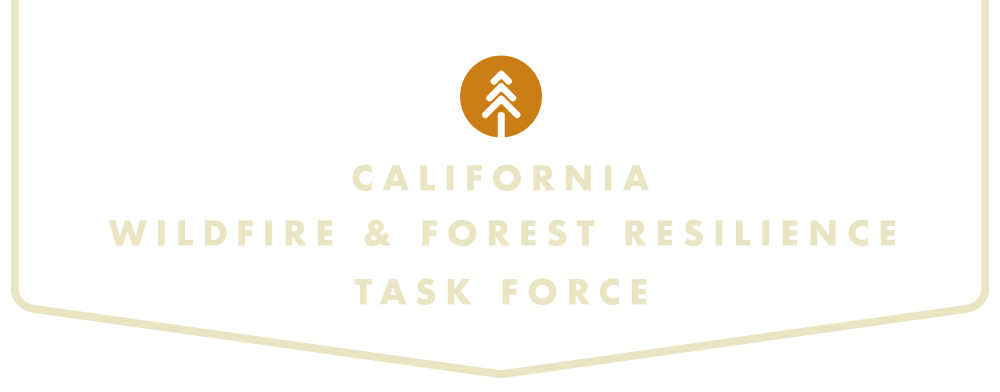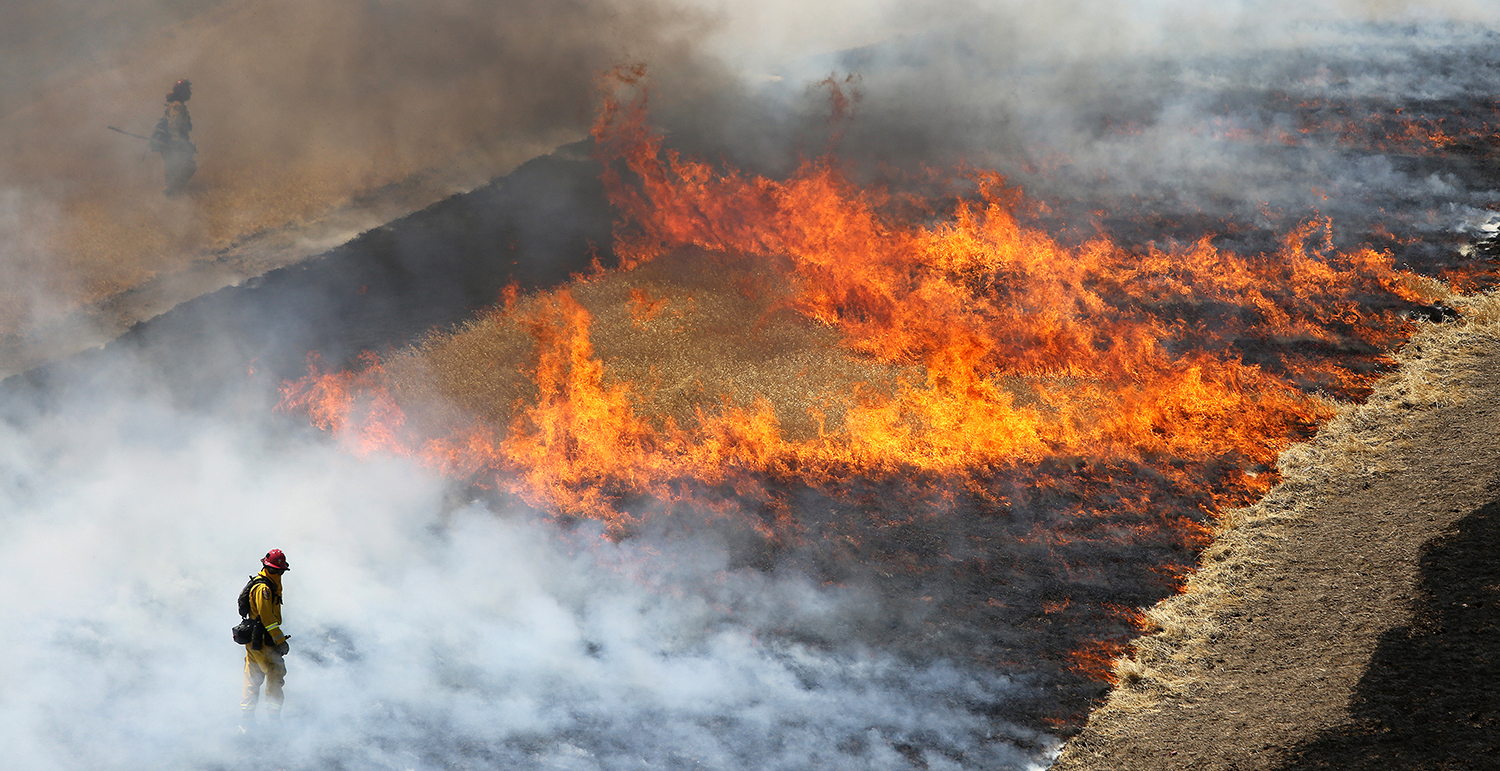New Online Treatment Dashboard to Track Wildfire Resilience Projects
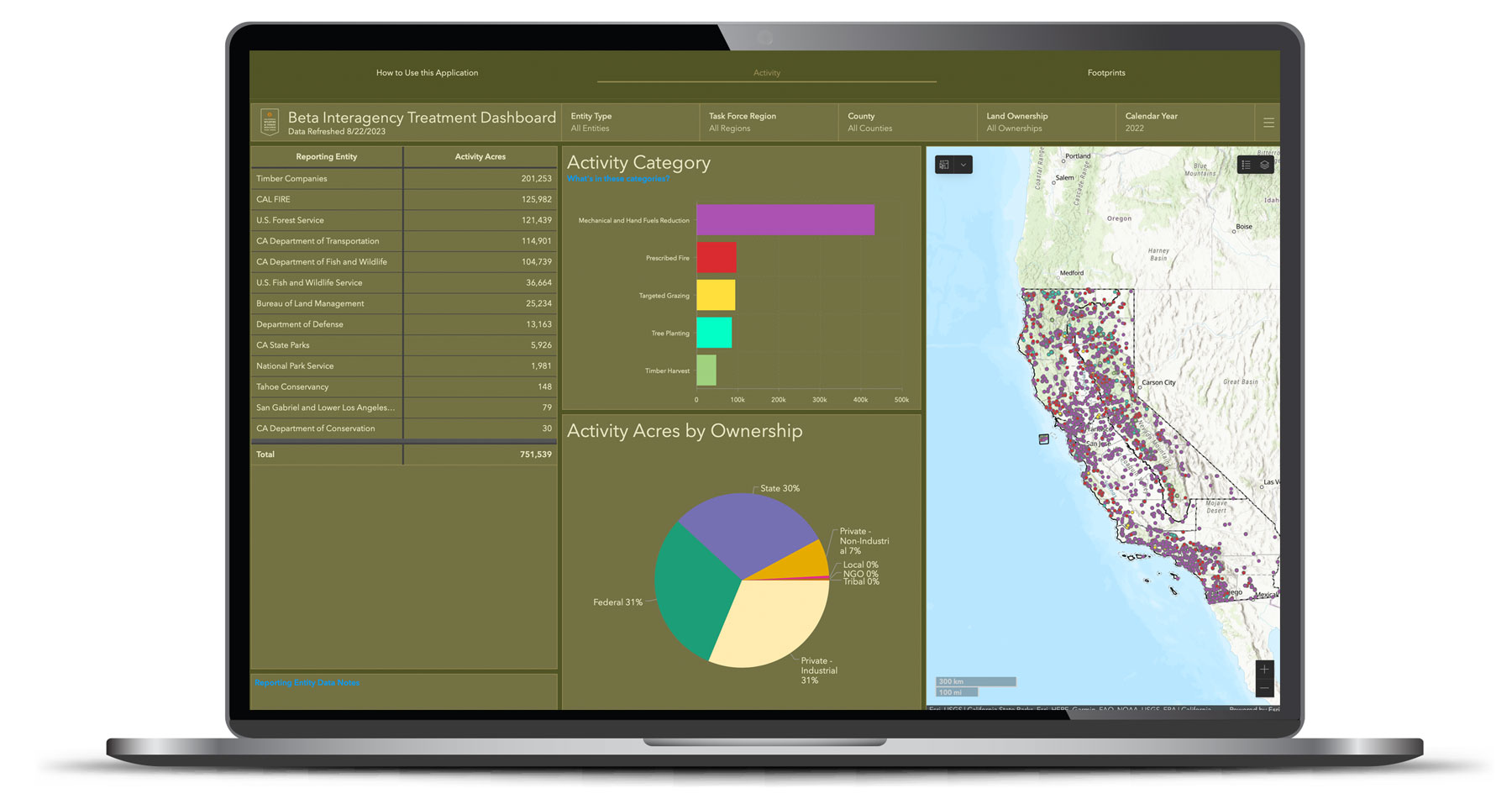
New Online Treatment Dashboard to Track Wildfire Resilience Projects
On August 29, the Governor’s Wildfire and Forest Resilience Task Force launched the beta version of a first-of-its-kind Interagency Treatment Dashboard beta that displays the size and location of state and federal forest and landscape resilience projects in California.
The dashboard offers a one-stop-shop to access data, provide transparency, and align the efforts of more than a dozen agencies to build resilient landscapes and communities in California. It reports treatment activities such as prescribed fire, targeted grazing, uneven-aged timber harvest, mechanical and hand fuels reduction, and tree planting. Users can sort treatments by region, county, land ownership and more.
The beta version of the dashboard will continue to be refined to include additional data, including projects by local and tribal entities, along with revisions based on public feedback. An official launch is expected in spring 2024 with more complete data on projects implemented in 2022.
Prescribed Fire Liability Claims Fund Pilot
Prescribed FireLiability Claims Fund Pilot
The Need
One of the primary obstacles to increasing the use of prescribed and cultural fires in California is the difficulty of obtaining adequate liability coverage. While escape rates are very low, there is always some risk when working with fire. Liability coverage protects qualified practitioners, property owners, and the public from the associated financial risk. However, many practitioners on private or tribal land are unable to obtain affordable private insurance for beneficial fire operations.
The Legislation
In September 2022 Governor Newsom signed into law SB 926, which established a pilot Prescribed Fire Claims Fund. This legislation authorizes claims covering certain losses arising from prescribed fires and cultural burning until January 1, 2028. This claims fund is intended to both encourage increased beneficial fire use and demonstrate that prescribed and cultural burning is low risk, to entice private insurers back into the market.
The Fund
Administered by CAL FIRE, the $20 million allocated for the Prescribed Fire Liability Claims Fund Pilot will cover losses in the rare instance that a prescribed or cultural burn escapes control, providing up to $2 million in coverage for prescribed fire projects led by a qualified burn boss or cultural practitioner. The fund is meant to demonstrate that carefully planned, resourced, and implemented beneficial fire is a low-risk land management tool to mitigate high-severity wildfires and promote healthy and resilient landscapes.
To Enroll
Enrollment in the Fund is done by completing the California Prescribed Fire Claims Fund Online Application. To be eligible to enroll in the Fund, a prescribed fire must be conducted or supervised by a Burn Boss or a Cultural Fire Practitioner for a Cultural Burn.
Questions
CAL FIRE offers a detailed set of Frequently Asked Questions, covering everything from enrollment, application approval, claims submissions, coverage limits and much more.
RESOURCES
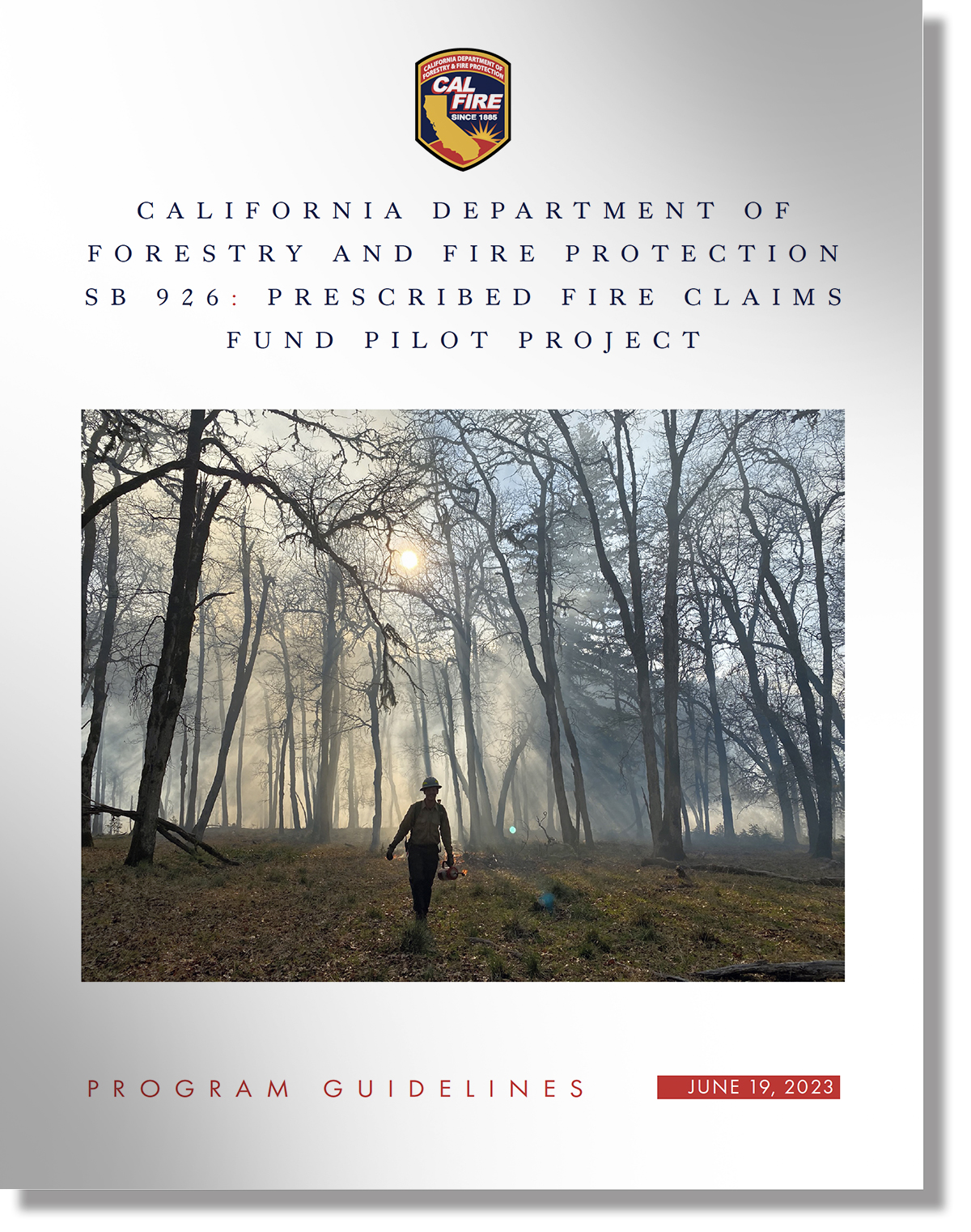
Interview with Lenya Quinnn-Davidson on the Prescribed Fire Claims Fund
California Takes a Big Step to Help Insure Private Companies That Fight Fire With Fire
Wildfire & Forest Resilience Treatment Tracking and Mapping
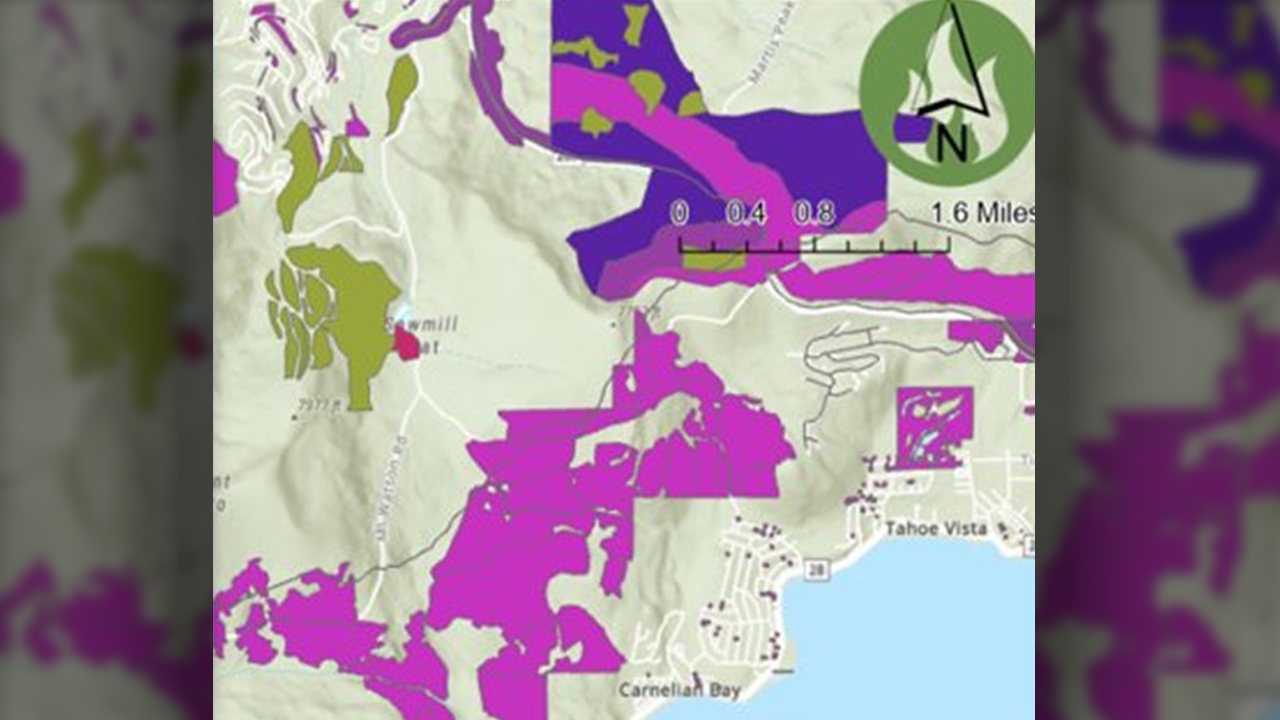
Wildfire & Forest Resilience Treatment Tracking and Mapping
At the March 30 Task Force meeting, the Task Force’s Monitoring, Reporting and Assessment Work Group gave an update on their efforts to build an interagency treatment tracker. The group is assembling federal, state, local, private data on planned, active, and completed projects statewide, including those on forests, grasslands, shrublands, and covering approximately 60 different activities (type of work completed). The goals include tracking progress toward state/federal acreage targets; facilitating regional planning and monitoring; and assessing benefits/costs beyond “acres treated.” The Task Force anticipates having a publicly available treatment tracking map and dashboard by summer 2023.
RESOURCES
Culturing Burning: Building Leadership, Trust, and Capacity
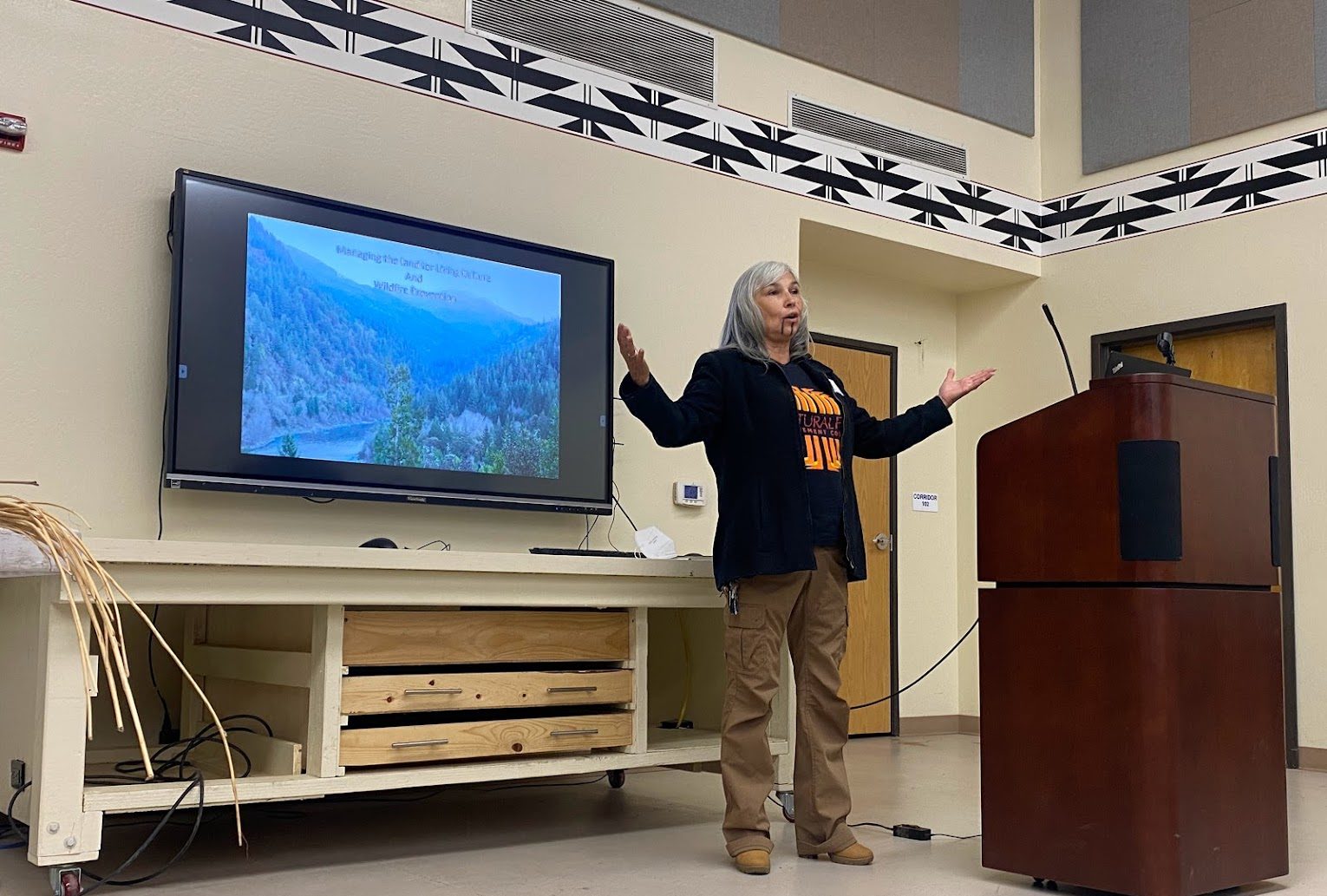
Culturing Burning: Building Leadership, Trust, and Capacity
The Karuk Tribe hosted a day long workshop that included presentations from Karuk and Yurok tribal members.
The California Department of Forestry and Fire Protection (CAL FIRE) is actively engaged with tribes to better understand how cultural burning is different from prescribed burning and then applying these lessons learned. By building relationships with tribal practitioners, CAL FIRE staff are gaining new insights into fire management and finding new ways to support tribal fire management practices.
As California continues wildfire and forest resilience efforts throughout the state, many changes are underway to empower governments at all levels and private landowners to treat more acres in the effort to keep California communities safe and better protected.
One tool in the toolbox for achieving this: using fire to treat brush and vegetation before wildfires occur. Prescribed fire and cultural burning are fuels reduction tools recognized as cost effective and ecologically beneficial to the landscape. Indigenous peoples in California have a long history of using fire to modify the landscape and cultural burning has been conducted by indigenous tribes for millennia. Reintroducing this tool to the landscape is a mutual goal for the California Department of Forestry and Fire Protection (CAL FIRE), and native tribes.
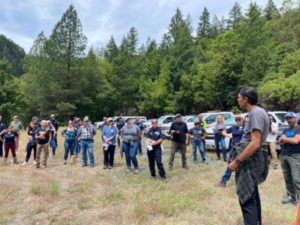
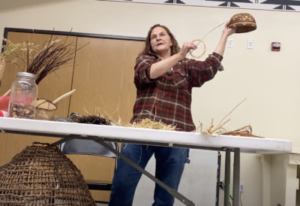
“By building strong relationships, and through the Tribes’ sharing of knowledge about cultural burning, we can gain a deeper understanding and connectedness to our environment that will help our staff to better support cultural burning,” said Len Nielson, CAL FIRE Staff Chief, Prescribed Fire. “This understanding is needed to have cultural burning occur at an increased pace and scale.”
It also fits within the department’s broader mission. CAL FIRE is responsible for fire protection and stewardship of over 31 million acres of California’s privately-owned wildlands. Assisting landowners and land managers with the support, knowledge, and skills to treat their property safely and effectively with fire is a critical strategy for sustaining the values we cherish for managing our state forests and other wildlands.
In this spirit, a number of activities are happening. CAL FIRE is supporting a burn boss training and certification, providing grants to Prescribed Burn Associations (PBAs), establishing a liability claims fund, creating prescribed fire training centers, and supporting California’s tribal communities to revitalize cultural burning. These are several of the strategies that CAL FIRE is working on to get more beneficial fire on the ground to help improve the health and resiliency of our forests.
“It was a pleasure to host so many great people from across multiple sectors of state government, and to have such a strong presence of CAL FIRE leadership at our event,” commented Bill Tripp, Director of Natural Resources and Environmental Policy for the Karuk Tribe. “It is, after all, the personal relationships and mutual understandings that we can establish based on real world, place-based situations that will help us to truly address the many challenges we face,” said Tripp.
The workshop included presentations from Karuk and Yurok tribal members and a field tour of previously burned areas showing how prescribed fire and cultural burning practices are interrelated for resource protection and revitalization of resources. In attendance were the CAL FIRE leadership team from Sacramento, local and regional foresters, archeologists, and environmental scientists from CAL FIRE and other state agencies. Building relationships and learning about the connections between culture and the landscape from tribal cultural practitioners is a good first step in fostering relationships with Tribal partners and other land managers in California to achieve our wildfire and forest resilience goals.
Photos: Tisina Parker
USFS Will Resume its Prescribed Fire Program
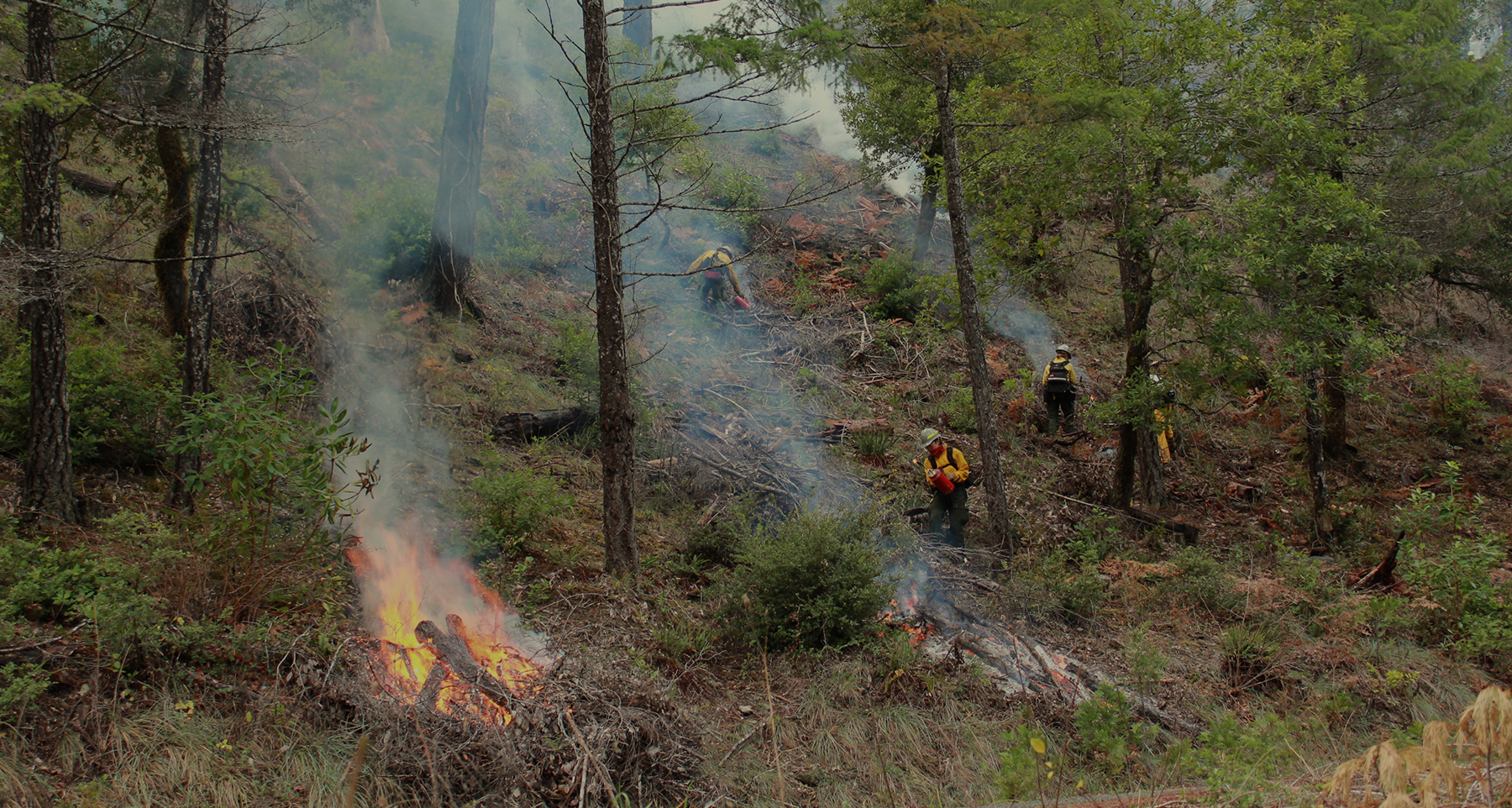
USDA Forest Service Chief Randy Moore Announces Actions the USFS Will Take to Resume its Prescribed Fire Program
Update on USFS’ Prescribed Fire Pause. In a statement announced on September 8, USFS Chief Randy Moore has decided – based on a thorough review, findings, and recommendations provided by its National Review Team – to conditionally resume the USFS’s prescribed fire program nationwide. The conditions include a requirement that all USFS units immediately follow all seven tactical recommendations identified in the National Prescribed Fire Program Review. These actions will ensure prescribed fire plans are up to date with the most recent science, that key factors and conditions are closely evaluated the day of a prescribed burn, and that decisionmakers are engaged in those burns in real time to determine whether a prescribed burn should be implemented.
RESOURCES
Wildland Fire Lessons Learned Center
U.S. Forest Service Announcement
California Air Resources Board Releases California Smoke Spotter 2.0
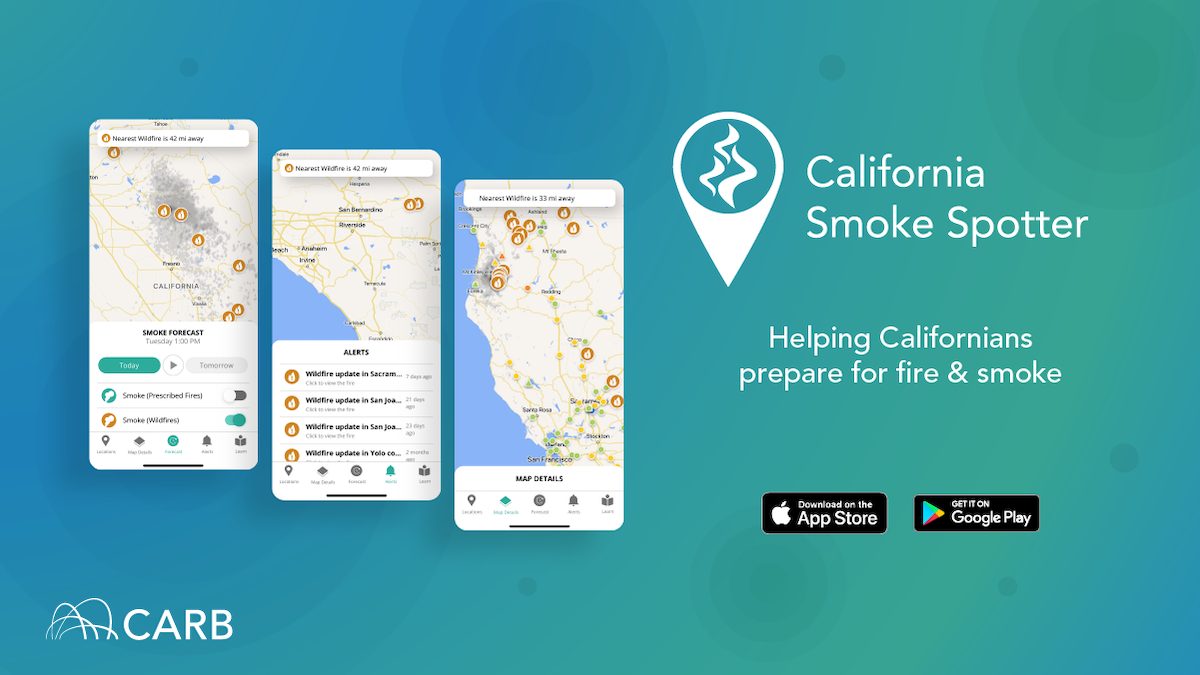
California Air Resources Board Releases California Smoke Spotter 2.0
The California Air Resources Board (CARB) has released a major update to its California Smoke Spotter mobile app to help users protect themselves from smoke during wildfire season. New features of the app include wildfire information and alerts, a 24-hour wildfire smoke forecast, and Air Quality Index (AQI) data from PurpleAir sensors to provide users with real-time smoke conditions (in addition to AQI data from permanent and temporary air monitors).
California Smoke Spotter 2.0 still contains its original features including prescribed fire details, alerts and smoke forecasts, as well as information on how users can protect themselves from smoke. It’s available to download on the App Store and Google Play.
This achievement contributes to the Task Force’s broader goal of strengthening the protection of communities, and more specific aim to reduce the health impacts of smoke.
RESOURCES
State Can Fight Fire With Prescribed Fire By Funding Jobs In The Field
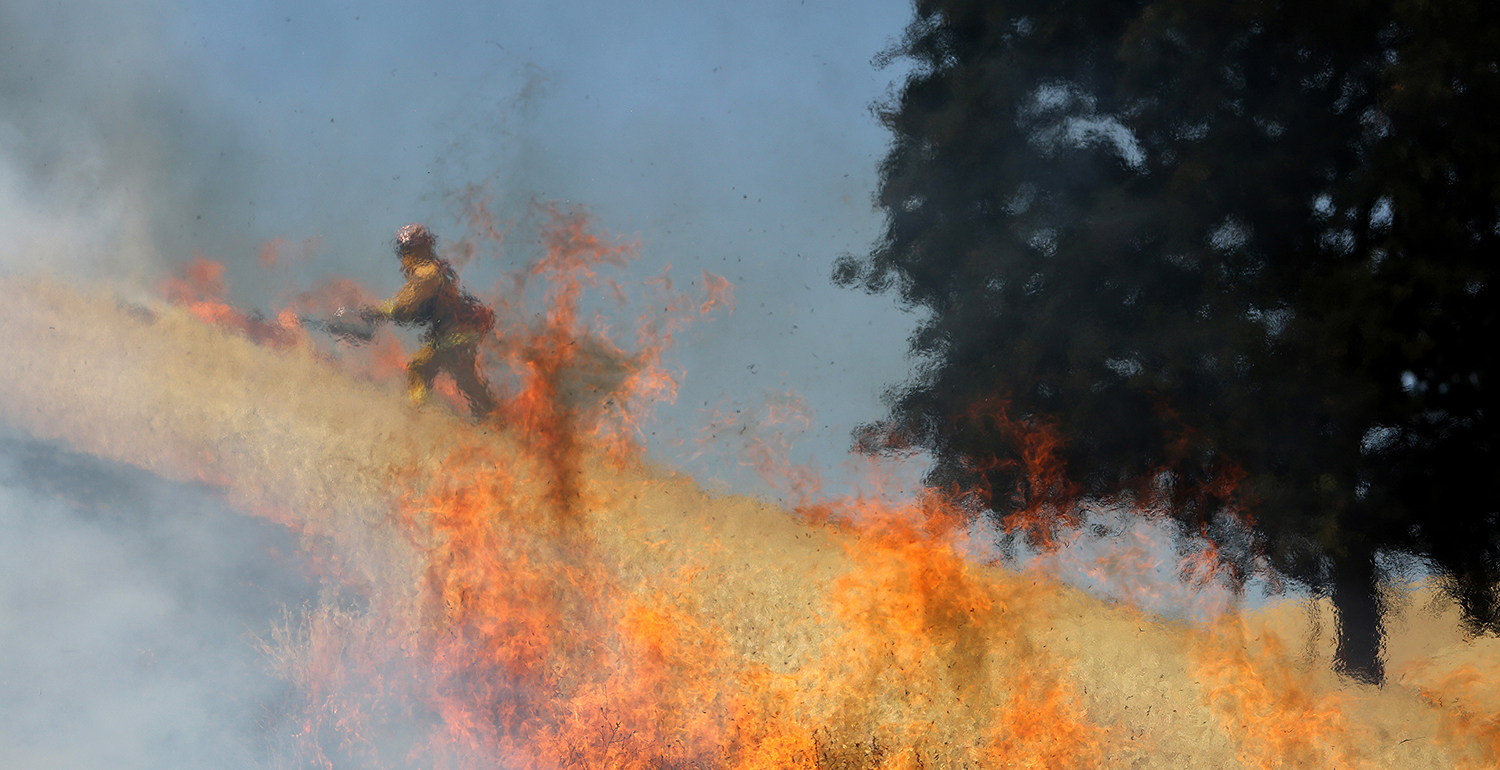
State Can Fight Fire With Prescribed Fire By Funding Jobs In The Field
“It is now accepted that prescribed fire is needed to conserve and restore biodiversity, prevent catastrophic fires, stabilize carbon and promote public health and safety. To address the pace and scale of prescribed fire that is needed, we must invest in careers in prescribed fire.” Read this guest commentary in CalMatters.org from Tom Gardali, CEO, Audubon Canyon Ranch.
RESOURCES
LA Times Op-Ed: Why Forest Managers Need To Team Up With Indigenous Fire Practitioners
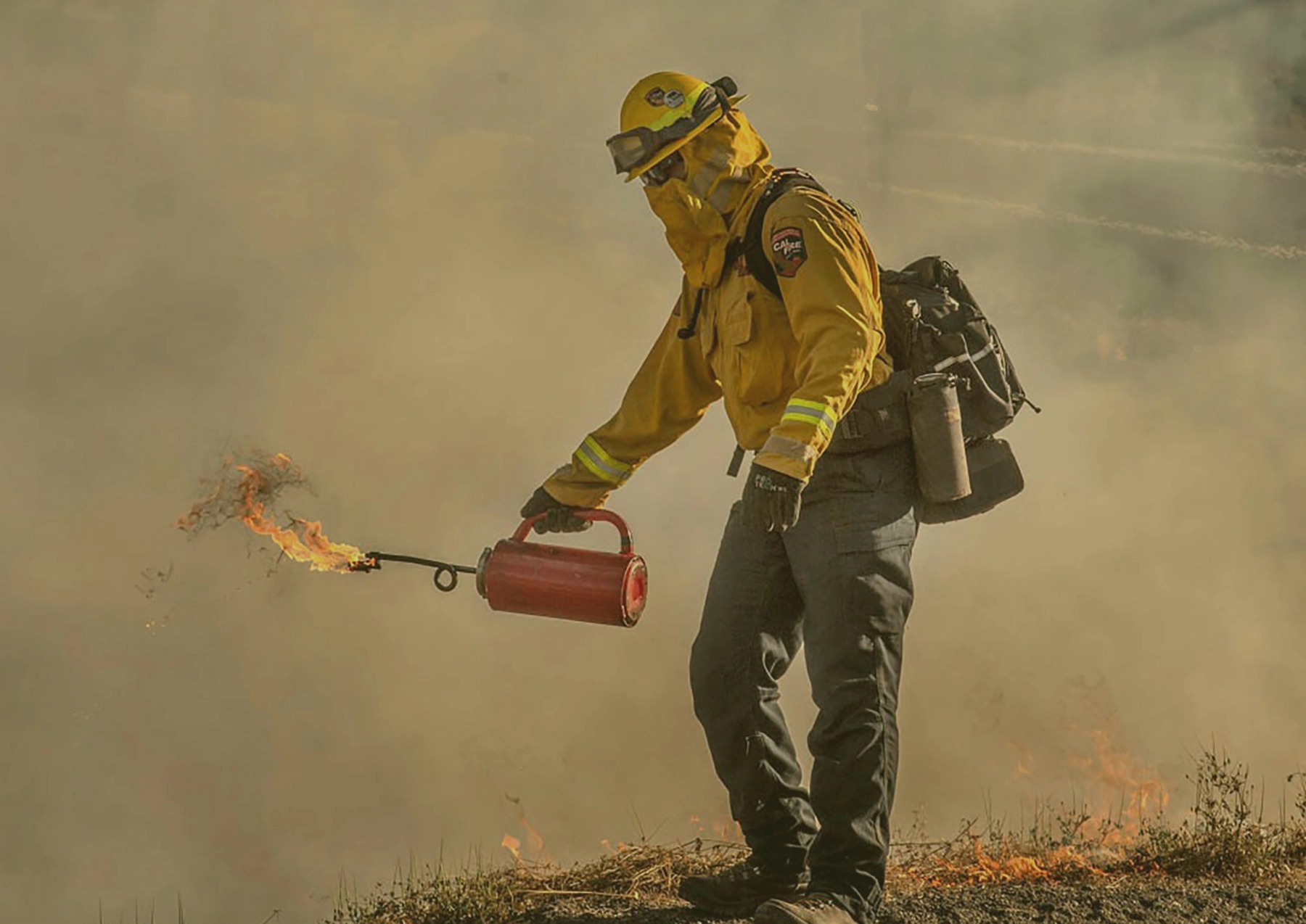
LA Times Op-Ed: Why Forest Managers Need To Team Up With Indigenous Fire Practitioners
Los Angeles Times, July 31, 2022, By Don Hankins, Scott Stephens and Sara A. Clark
The forests of the Western United States are facing an unprecedented crisis, besieged by wildfires and climate change. There is a precedent for part of the solution, though: intentional burns such as those set by Indigenous peoples.
RESOURCES
This Indigenous Practice Fights Fire With Fire
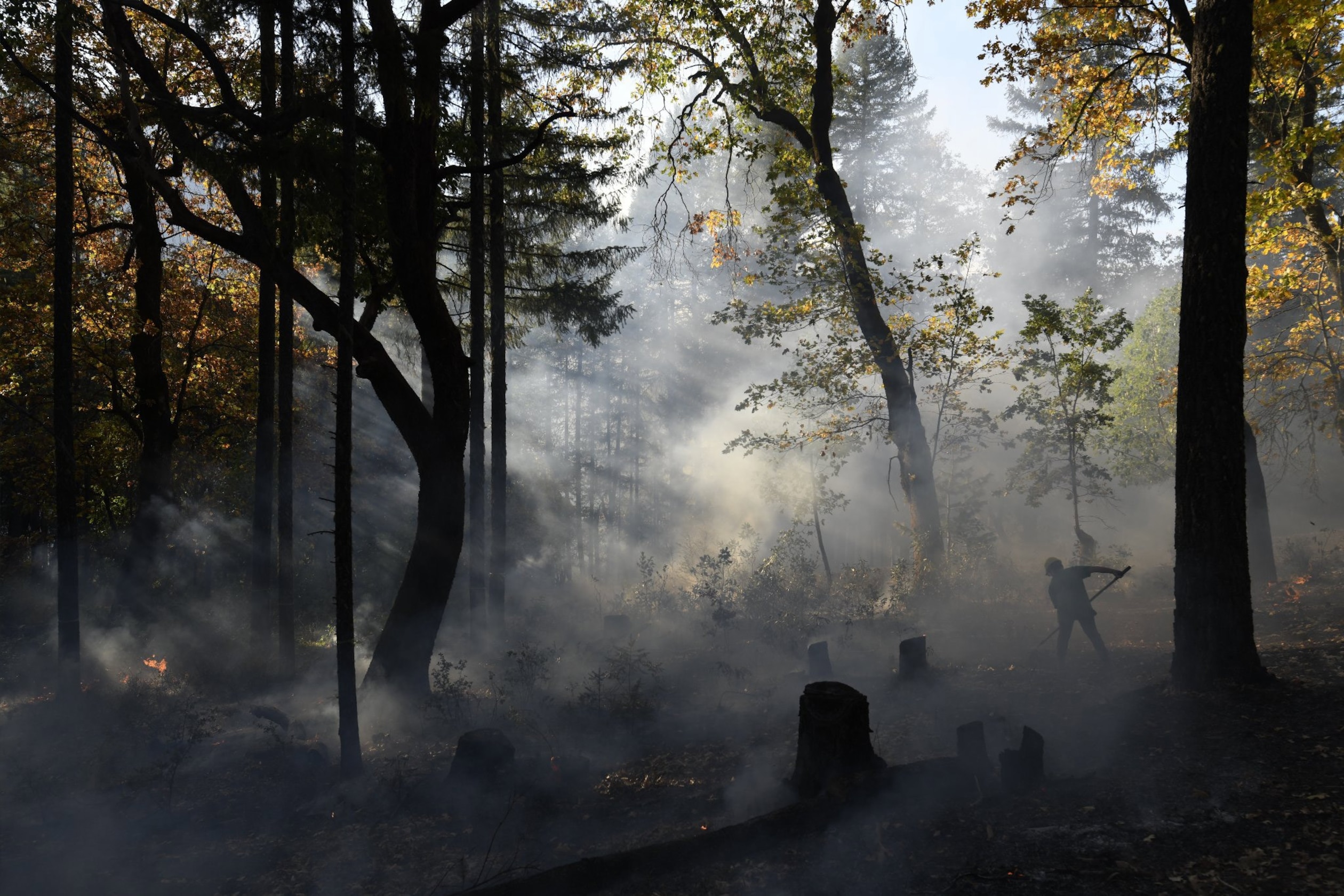
This Indigenous Practice Fights Fire With Fire
For decades, the U.S. government evangelized fire suppression, most famously through Smokey Bear’s wildfire prevention campaign. But as climate change continues to exacerbate wildfire seasons and a growing body of scientific research supports using fire to fight fire, Indigenous groups in the Klamath Basin are reviving cultural burning practices that effectively controlled forest fires for centuries. National Geographic photographer Kiliii Yüyan introduces us to people bringing back this cultural practice and teaching the next generation how to use fire.
RESOURCES
Task Force Issues Strategic Plan For Prescribed Burns
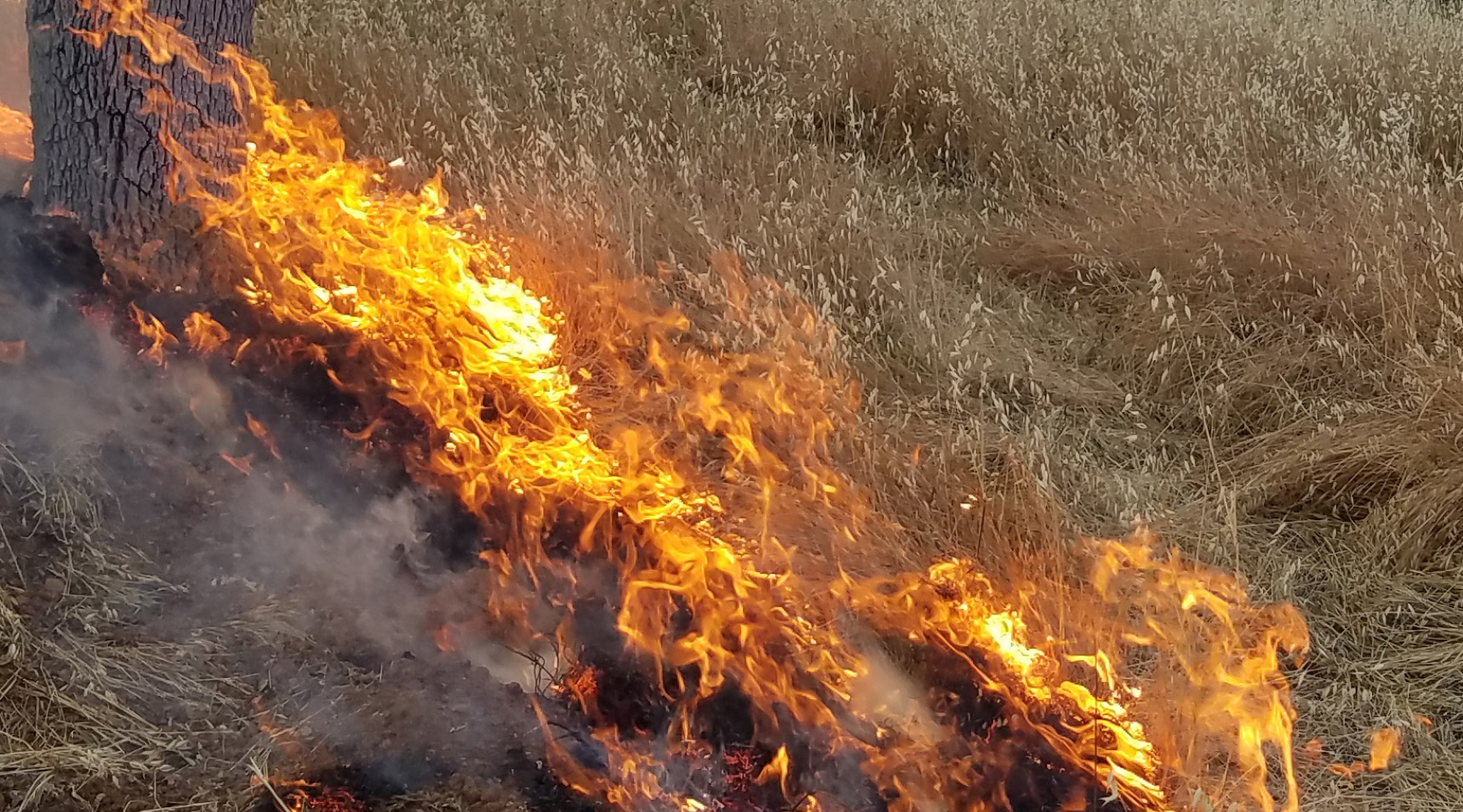
Task Force Issues Strategic Plan For Prescribed Burns
Comprehensive strategy lays path for state, federal, and tribal partners to promote use of “beneficial fire” on up to 400,000 acres annually by 2025 to help make forests more resilient.
March 30, 2022 – California Wildfire and Forest Resilience Task Force issued a Strategic Plan for Expanding the Use of Beneficial Fire to expand the use of prescribed fire and cultural burning to build forest and community resilience statewide – efforts critical to forest management and wildfire mitigation. By expanding the use of beneficial fire, the state can utilize smart burning tactics on brush and other fuels to help both prevent the start of fires and mitigate the spread of wildfires.Based on a collaborative effort of the state’s leading fire experts and managers, the Strategic Plan sets a target of expanding beneficial fire to 400,000 acres annually by 2025, a shared goal between state, federal, tribal, and local entities – part of an overall goal to treat 1 million acres annually in California by 2025. The state invested $1.5 billion in wildfire resilience in 2021 alone, including significant support for prescribed fire and cultural burning.“As climate change continues to exacerbate wildfire conditions, we’re bringing federal, state, tribal, and local partners together to more effectively address the scale of this crisis,” said Governor Gavin Newsom. “California is putting in the work to help protect our communities from the devastating impacts of wildfires, build for the long-term, and safeguard our treasured state for generations to come.” The Governor earlier this week participated in fuels management work along Highway 50 ahead of peak wildfire season, click here for b-roll of the Governor joining CAL FIRE and Conservation Corps crews.“We know that returning good fire to the ground is one of our best tools in the fight against catastrophic wildfire and climate change,” said Task Force Co-Chair and California Secretary for Natural Resources Wade Crowfoot. “This Strategic Plan includes the key steps we need to take over the next few years to build capacity, return to a culture of beneficial fire, and invest in our future.”“This plan is vital to improve the health and resilience of the state’s forests, reduce wildfire risk of vulnerable communities, and increase stewardship by Native American fire practitioners,” added Task Force Co-Chair and U.S. Forest Service Regional Forester Jennifer Eberlien.The key elements of the Strategic Plan include:
- Launching an online prescribed fire permitting system to streamline the review and approval of prescribed fire projects;
- Establishing the state’s new Prescribed Fire Claims Fund to reduce liability for private burners;
- Beginning a statewide program to enable tribes and cultural fire practitioners to revitalize cultural burning practices;
- A prescribed fire training center to grow, train, and diversify the state’s prescribed fire workforce;
- An interagency beneficial fire tracking system;
- Pilot projects to undertake larger landscape-scale burns; and
- A comprehensive review of the state’s smoke management programs to facilitate prescribed fire while protecting public health.
The announcement delivers on several of the key commitments made in the Wildfire and Forest Resilience Action Plan issued in January 2021. The Action Plan is also backed by the Governor’s $1.5 billion investment in forest health and wildfire resilience, and a proposed $1.2 billion additional investment for fiscal years 2022-23 and 2023-24. Lenya Quinn-Davidson, Area Fire Advisor, UC Cooperative Extension: “The plan gives me hope because it represents the vision and priorities of the people who know prescribed fire best—the community leaders, cultural burners, and agency practitioners who have been leading and championing this work for years. California is ready for a bolder, more collaborative approach to prescribed fire, and this plan gives us a great place to start.”Don Hankins, Professor, CSU Chico and Cultural Fire Practitioner: “California’s Strategic Plan for Expanding the Use of Beneficial Fire takes an unprecedented step for the state to address shortcomings of current fire policy and use. Most significant is the recognition of the role of Native American tribes, organizations and practitioners to revitalize traditional fire stewardship.”Craig Thomas, Director, The Fire Restoration Group: “California’s Strategic Plan for Expanding the Use of Beneficial Fire demonstrates the collaborative commitment to expand the use of restorative fire to limit damaging wildfires, stabilize forest carbon, better protect communities, and restore and maintain resiliency and biodiversity in the California landscape. This past year of collaborative work with State and Federal agencies, scientists, and multiple non-governmental partners has addressed and supported the proper role of restorative fire in California.”
Visit: Prescribed Fire Action Area Page
